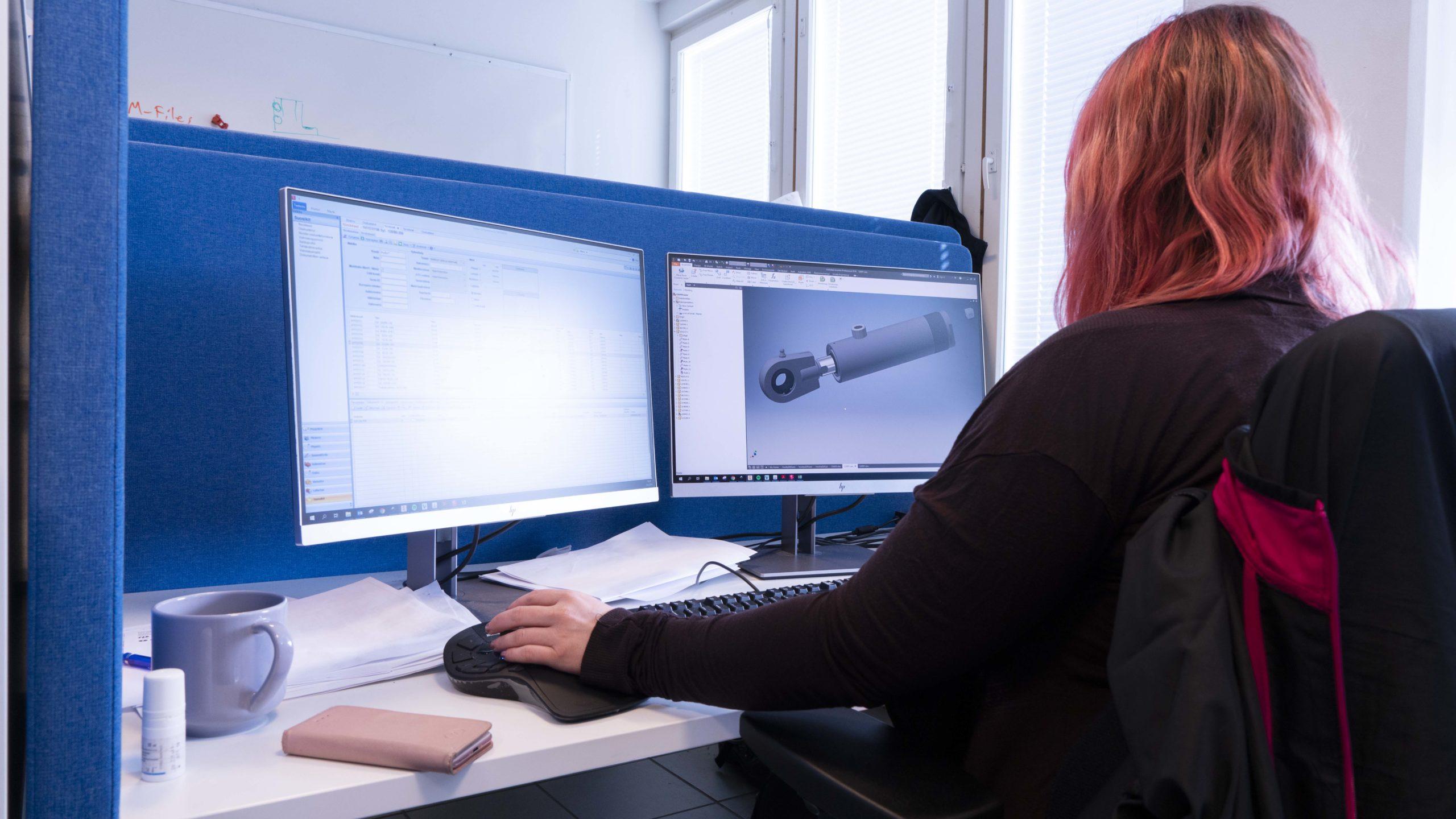Hydraulic cylinder’s initial data
What is hydraulic cylinder initial data? When it comes to designing a hydraulic cylinder, the most important part is to provide the designer the information about the cylinder and its requirements in advance. Each cylinder is its own unique entity and at Hydroline, they are always designed according to the customer’s specific and unique needs. Therefore, as comprehensive and accurate information about the cylinder’s requirements as possible are extremely important. Comprehensive output data also fastens the design and manufacturing process.
Usually, the starting point is the cylinder’s final operating environment. The cylinder’s operating environment, among other things, affects if the materials need to be completely stainless or acid resistant. Information about the operating environment is also needed for the cylinder’s painting and other finishing operations; with the information, the designer can make sure that also the cylinder’s surface can endure the demanded usage. Also, the cylinder’s operating pressure and external forces set their requirements when designing a cylinder.
 Also, the hydraulic cylinder’s lifetime goal that the customer has set for the cylinder is an important factor that needs to be known, in order for the designer to be able to perform the strength calculation. According to the given information, it is possible to calculate theoretically if the cylinder will be able to endure the demanded usage. Often, customers also share the information about the cylinder’s using purpose as well as the hydraulic diagram of the machine.
Also, the hydraulic cylinder’s lifetime goal that the customer has set for the cylinder is an important factor that needs to be known, in order for the designer to be able to perform the strength calculation. According to the given information, it is possible to calculate theoretically if the cylinder will be able to endure the demanded usage. Often, customers also share the information about the cylinder’s using purpose as well as the hydraulic diagram of the machine.
All kind of information is valid when starting to design a hydraulic cylinder because even though two cylinders might look alike from the outside, they might differ completely from each other when it comes to their functions and features. We will take a more closer look on this in our other blog text which tells you what kind of differences there might be inside two similar cylinders. For example, two similar kinds of cylinders might have been designed to create a completely different amount of force, depending on their operating purpose. This is why the initial data needs to provide the information on what the hydraulic cylinder is supposed to do in the machine and with what kind of pressures and forces.
Also, what needs to be known when designing a cylinder, is the size of the area in which the cylinder is designed to be able to operate in the machine and how much it needs to move. Usually, the customer can provide a picture or a 3D model of the cylinder’s installation environment, according to which the size can be made sure. The customer also provides the information about the cylinder’s connection sizes and locations as well as possible special features. Also, the cylinder’s attachment points’ locations need to be defined so that it fits to its place.

When it comes to the usage of the cylinder, what needs to be known are the oil flow (l/min), cylinder’s movement speed (m/s) as well as cylinder’s planned sliding distance during its lifetime (m or km) and the stress accumulation during its usage. This is how we are able to choose the right kind of seals and also the tube’s material. The output data also needs to tell how much the cylinder needs to create force.
In case the actual operation of the cylinder is not known well enough, we have developed LEO (Lifecycle Efficiency Online). With LEO, the cylinder’s usage can be measured and the information can be processed into a readable form. This way, it is possible to access the information on what the cylinder is facing and what it needs to endure and how long the cylinder is going to last before it needs to be changed or repaired.
One alternative to output data can also be a current solution that needs to be replaced with a new one. Also, alternatively, complaint statistics can be the output data with which the already existing solution can be developed to an even more cost-effective and better solution. The most important single thing in the whole process is to listen to the customer and their needs so that we can offer the best possible product.
The specific information related to deliveries are given to the hydraulic cylinder manufacturer as well; for example, the requirements about packaging, dispatching and cylinder marking.
The customer might also have specific demands about hydraulic cylinder’s testing; for example, cleanliness measurements or fatigue measurements with which the customer wants to ensure the endurance of the cylinder. These often are related to safety critical cylinders which are used for example in special platforms in which the hydraulic cylinder’s flawless operation is extremely critical. By testing, it is made sure that the cylinder meets the safety standards of the customer’s machine and is made according to the requirements.
The meaning of comprehensive output data is to avoid unnecessary and time-consuming extra work so that things do not need to be done several times. Hydroline’s designers cooperate with the customer so that needless modifications afterwards for the cylinder can be avoided and everything is done correctly at once.


